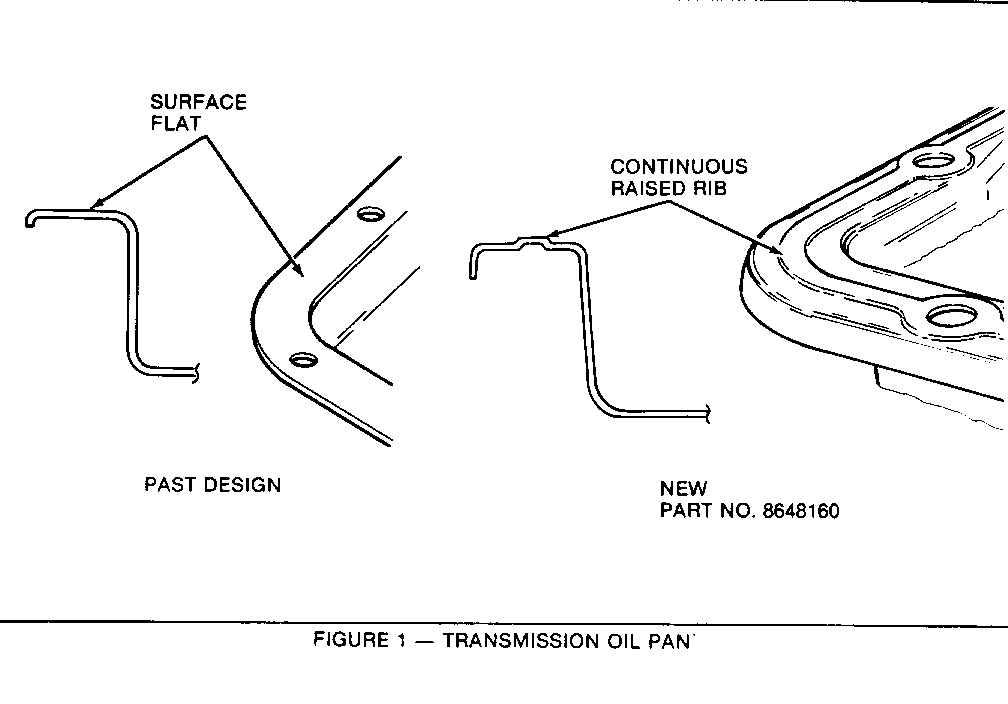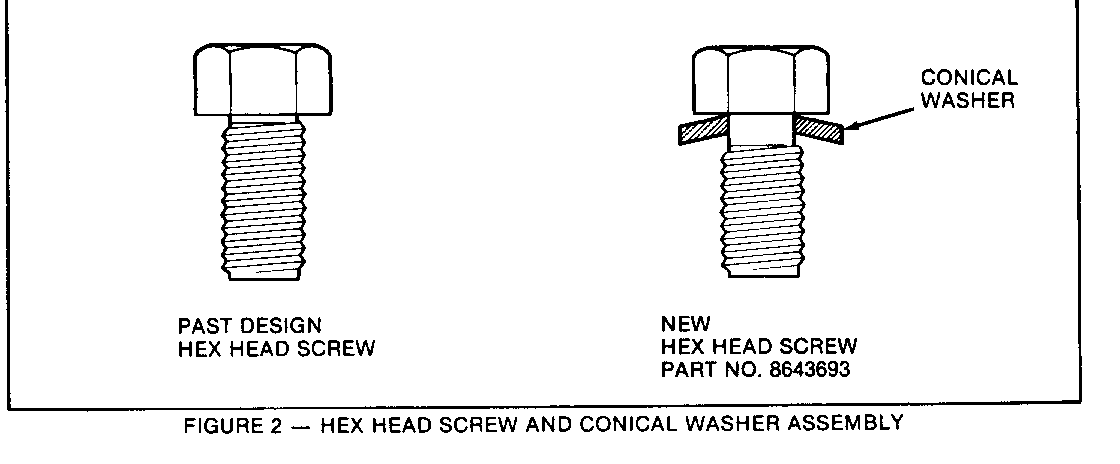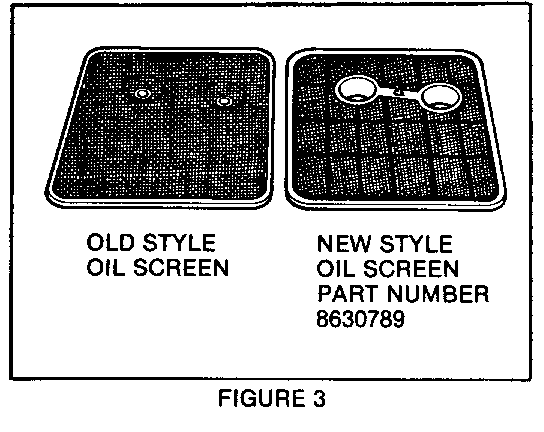TRANSMISSION OIL PAN LEAKS NEW OIL PAN200-200C

MODELS AFFECTED: 1979-1981 DEVILLE, BROUGHAM 1979 SEVILLE
1979-1981 Cadillacs equipped with THM 200/200C transmissions experiencing an oilleak from the oil pan due to poor sealing can now be serviced with a new oil pan that is thicker and has a raised continuous rib on the flange (refer to Figure 1). The new pan uses a gasket in place of RTV. A hex head screw/conical washer assembly (refer to Figure 2) is also used with the new pan and gasket. These changes were made to reduce the possibility of an oil leak in this area.
When servicing vehicles exhibiting this condition, follow the listed service procedures and parts information.
Service Procedures
1. Remove the oil pan following Section 7A of the appropriate Service Information Manual.
2. Make sure that all RTV sealant is removed from the case oil pan face. Care should be taken to avoid nicking or damaging the case face.
3. Assure that all new service parts are used. On 1979 models, the previous type oil screen must be replaced with a new oil screen to avoid interference with the new Figure 3).
NOTICE: (A) Do not use RTV with the new pan and gasket.
(B) When reassembling with the new parts, take care not to overtorque. A split or cracked gasket may result. Torque bolts to 11.0 N.m (9 ft.-lbs.), then retorque a second time to the same torque. The retorque is important because the gasket material relaxes after the first tightening.
Parts Information
------------------ QTY Description P/N QTY Description P/N --- ----------- --- --- ------------ --- 1 Transmission Oil Pan 8648160 1 Transmission Oil Screen 8638930 1 Oil Pan Gasket 8648161 (includes oil pan & valve 11 Screw-Washer Assembly 8643693 body gaskets) 1 Gasket, Screen to Valve Body 8628300
All parts are available separately or as a kit from GMWDD.



General Motors bulletins are intended for use by professional technicians, not a "do-it-yourselfer". They are written to inform those technicians of conditions that may occur on some vehicles, or to provide information that could assist in the proper service of a vehicle. Properly trained technicians have the equipment, tools, safety instructions and know-how to do a job properly and safely. If a condition is described, do not assume that the bulletin applies to your vehicle, or that your vehicle will have that condition. See a General Motors dealer servicing your brand of General Motors vehicle for information on whether your vehicle may benefit from the information.
